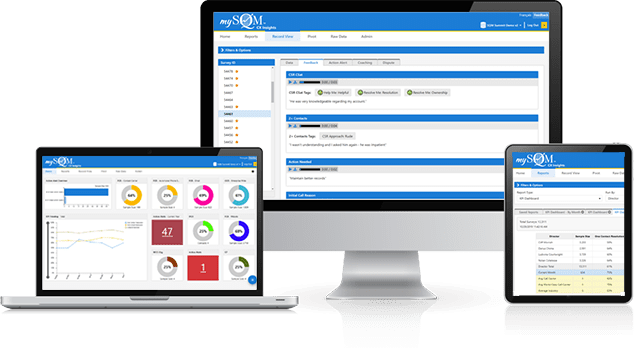What is First Contact Resolution Definition?
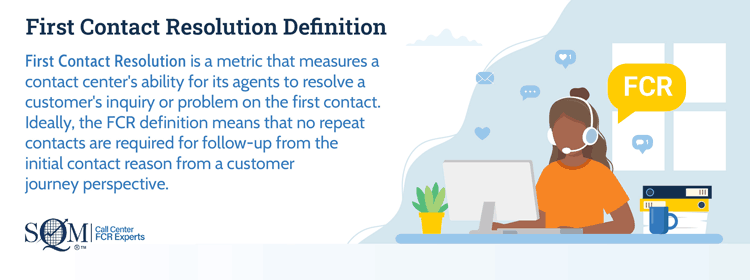
It is common for First Contact Resolution and First Call Resolution to be used interchangeably, but there is a distinction between them. First Contact Resolution is defined as a customer's inquiry or problem is resolved in their first attempt, regardless of the contact channel (e.g., email, web, phone, chat, etc.) used. First Call Resolution is very similar to First Contact Resolution in that it focuses on a customer's inquiry or problem is resolved on the first attempt, but the contact channel is specifically the phone channel (i.e., call center).
Why is First Contact Resolution Important?
We are often asked, "Why is First Contact Resolution important?" First Contact Resolution KPI is the KING of all call center metrics because measuring it and improving it helps reduce operating costs, reduces customer defections, and improves customer satisfaction (Csat) and the transactional Net Promoter Score (NPS®). No other contact center metric provides such insights for customer service, operating costs, customer retention, and referrals, as does First Contact Resolution.
When the First Contact Resolution rate is high or low for many organizations, so are the enterprises’ operating costs, Csat, and NPS metrics. Put differently, your First Contact Resolution rate is the pulse of your Organization's effectiveness and efficiency. The bottom line for many organizations delivering on First Contact Resolution customer service is a leading KPI for lagging KPIs such as operating costs, Csat, and transactional NPS.
SQM research reveals that only 1% of customers expressed their desire to stop doing business with a company when FCR is achieved. Furthermore, for every 1% improvement in First Contact Resolution, there is a .5% increase in customer retention among customers who expressed intent to defect due to poor service. When it took two or more calls to resolve an inquiry, 4% of customers expressed their intent to defect. However, an alarming 22% of customers expressed their intent to defect if their call was unresolved. Most organizations do not know which customer's call goes unresolved.
According to Reichheld (1996), "In general, the longer a customer stays with a company, the more that customer is worth. Long-term customers buy more, take less of a company's time, are less sensitive to price, and bring in new customers. Best of all, they have no acquisition or start-up cost. Long term customers are worth so much that in some industries, reducing customer defections by as little as five points – from, say, 15% to 10% per year – can double profits."
First Contact Resolution metric positively impacts contact center and enterprise-wide Csat. SQM's research shows that for every 1% improvement in First Contact Resolution, there is a 1% improvement in contact center customer satisfaction. Furthermore, our research shows that on average, Csat (top box response) drops 15% every time a customer has to call back to resolve their initial call.
Also, the First Contact Resolution metric positively impacts transactional NPS. SQM's research shows that every 1% improvement in First Contact Resolution increases transactional Net Promoter Score® by 1.4 points for the average contact center. FCR and transactional NPS have a statistical correlation of .64, which would be considered high and shows that FCR positively impacts transactional NPS.
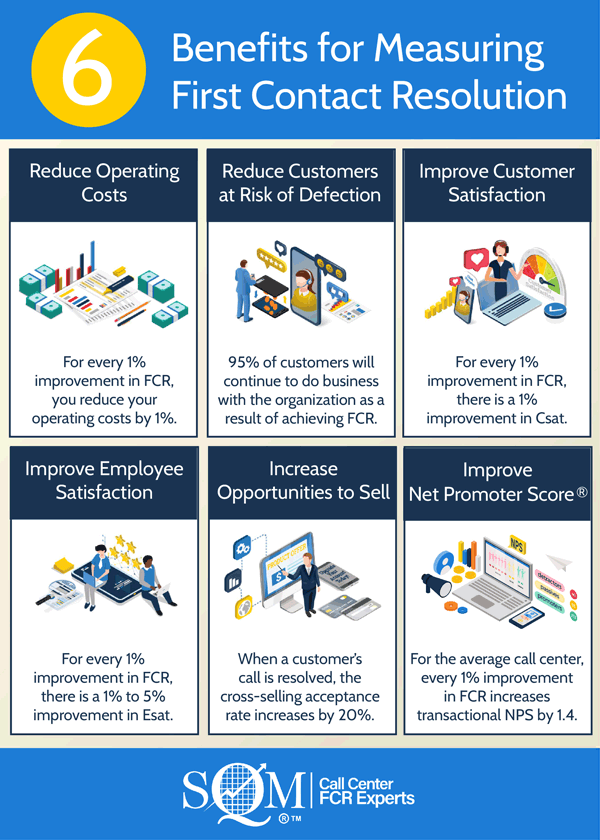
How to Measure First Contact Resolution?
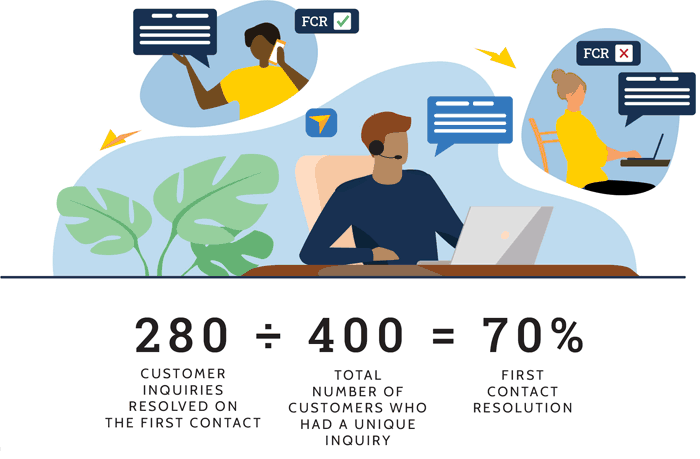
First Contact Resolution Calculation Formula
A common First Contact Resolution formula used for determining the FCR rate is based on calculating the number of customers whose inquiry was resolved on their first contact, divided by the total number of customers who had a unique inquiry.
How to Measure First Contact Resolution
Below are the common practices for measuring and calculating external and internal First Contact Resolution rate benchmark.
External FCR measurement is considered to be the most accurate method for measuring and benchmarking FCR. External measurement lets the customer judge whether First Contact Resolution took place; after all, their opinion is what matters the most. In most cases, a post-call phone or email survey method is used for external FCR measurement.
Internal FCR measurement can be very insightful for trending First Contact Resolution and is widely used by contact centers. It is common for the internal FCR measurement to use workforce suites, CRM, and ACD telephony technology methods to determine the FCR rate. The internal FCR rate is based on whether the customer called back for the same issue within 1 to 30 days. Choosing the appropriate callback time can be difficult, and as a result, there is no standard for internal FCR measurement, making the FCR rate less accurate for benchmarking.
Call Center First Contact Resolution benchmark rate is 70%. This means that 30% of customers have to call back the Organization about the same inquiry or problem. The First Contact Resolution industry standard for a good FCR rate is 70% to 75%.
A common First Contact Resolution calculation formula used for determining the FCR rate is based on the number of customers whose inquiry or problem was resolved on their first call, divided by the total number of customer's first calls to the call center. The First Contact Resolution formula has many calculation options.
How to Improve Your First Contact Resolution?
First Contact Resolution Best Practices are based on SQM conducting customer and employee research with over 500 leading North American contact centers to identify who has world-class or improving FCR performance. SQM was the first company to develop and popularize the external FCR metric for the contact center industry. We are the industry leader for measuring and benchmarking FCR. We understand First Contact Resolution best practices because we wrote the book on it (seriously, we have written five books on FCR). Based on our FCR research experience, we developed the following 20 First Contact Resolution tips for improving the FCR rate.
20 - First Contact Resolution Tips
SQM's experience shows that an FCR best practice importance will vary depending on the contact center's performance and needs. Therefore, the 20 First Contact Resolution tips listed are not ranked for importance.

1. Measure First Contact Resolution Rate
Measure, benchmark, and track the First Contact Resolution rate using external and internal measurement methods continuously. Common examples of internal and external FCR rate measurement methods are:
Internal: agent logging, quality monitoring, reopened issues, and repeat call tracking
External: post-call phone surveys and email survey
Blue Cross Blue Shield of Massachusetts has successfully used internal and external FCR measurement methods to improve their First Call Resolution rate.
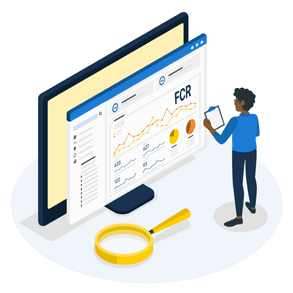
2. Identify Repeat Contact Reasons
Identify repeat contact reasons, use a post-call survey to identify customers who did not achieve First Contact Resolution, and ask them open-ended questions about why they could not resolve their transaction on the first contact. Also, use CRM and speech analytics to review and analyze callers that experienced a repeat contact. Develop repeat contact reason categories and then tag customer feedback into repeat contact reason categories (e.g., agent soft skills, billing, the status of the inquiry, complaint, agent knowledge, and First Contact Resolution training).
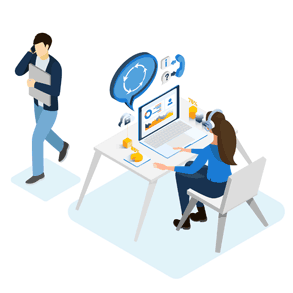
3. Determine Repeat Contact Reason to Improve
Determine which repeat contact reasons to improve by leveraging the data identified in the repeated contact reason categories. Targeted opportunities for improving a specific repeat contact reason should be based on the criteria of high-frequency and low customer satisfaction. It is essential to focus on improving on only 2 to 4 repeat contact reason categories to ensure FCR improvement occurs.
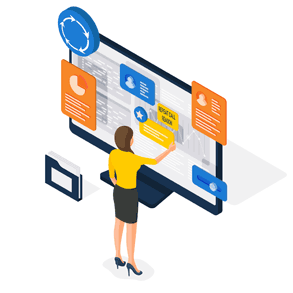
4. Develop Action Plan to Improve FCR
Develop an action plan on how to improve First Contact Resolution based on repeat contact reasons targeted opportunities identified. The action plan should include the 5 W's (i.e., what, when, who, why, where), and how. The action plan will need to be reviewed and championed by senior management or a steering committee and include First Contact Resolution scripts, tips, coaching, and training for agents. Also, the action plan should consist of people, processes, and technology activities that will help improve FCR.
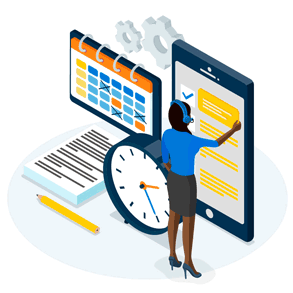
5. Determine First Contact Resolution Goal
Determine your FCR goal by conducting a contact center First Contact Resolution benchmark of your FCR rate using an external measurement method with a 3rd party specializing in the First Contact Resolution research. Then, based on your current FCR rate, establish an FCR rate improvement goal for the contact center. Many organizations' FCR goal is to strive for the contact center industry 1st quartile (75% FCR Rate) or the world-class (80% FCR Rate) standard level. A conservative FCR improvement goal is 1% to 2%, a moderate FCR improvement goal is 3% to 4%, and an aggressive FCR improvement goal would be 5% or more. A best practice is to hold all employees (e.g., CEO to Agent level) accountable to the First Contact Resolution goal.
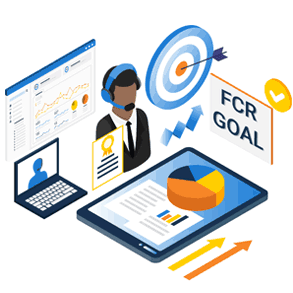

6. Agent Recognition
An effective Agent recognition program will greatly help management motivate Agents to excel at providing call resolution at the world class level and retaining top call resolution performing Agents. Regence BlueCross BlueShield has a Service Hero program that is their most successful and longest-running employee recognition program. The Service Hero program recognizes Agents that provide exemplary customer service and FCR
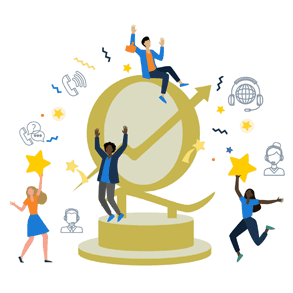
7. Agent Career Development
The essence of an effective Agent career development program is to have a formalized plan to align an Agent's career aspirations and the contact center's workforce needs. A best practice is to use an Agent's FCR or call resolution performance as part of the criteria for career development opportunities. Put simply, if the Agent's FCR and call resolution performance is at the appropriate level, they have earned the right when available to participate in career development opportunities.

8. Call Handling
SQM research shows how call handling best practices can improve or maintain great FCR, call resolution, cost, customer, and employee satisfaction performance. Canadian Tire Financial Services uses skill-based routing to ensure calls are routed to the rights Agents. An Agent can use their phone system to warm transfer customers in real-time to any department. Agents are highly trained and capable of resolving a customer's inquiry or problem at the first point of contact. Dedicated teams are in place to handle account retention, insurance retention, loyalty, disputes, fraud, and collections. For a dispute call type, an Agent can complete a three-way conference call to connect a customer with the merchant for immediate cancellation. Canadian Tire Financial Services has been performing at the world-class FCR level for over 20 years.

9. Escalation Agent Support
Handling and resolving escalated calls can be very challenging and emotionally draining. SQM's research shows that only 2% of those customers expressed intent to defect when the call is resolved on the first call. Blue Cross Blue Shield of Massachusetts uses a Service Solutions Line to handle escalated calls. Escalation call tracking identifies which Agents called and why, allowing them to identify training opportunities at both the individual Agent and department levels.
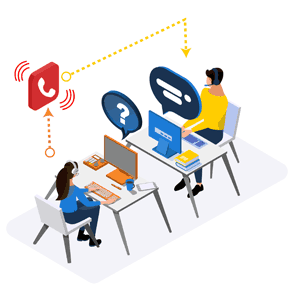
10. Agent Coaching
Many contact centers claim that their supervisors spend approximately 50% or more of their time coaching Agents to improve their customer's contact center experience and FCR. SQM believes that it is not only the time that is important but the quality of coaching. Mr. Cooper uses a coach-the-coach approach. They use a coaching feedback grading form to evaluate and score their coaches' effectiveness by rating them on specific criteria. The coaches are observed by their VP weekly and given a score of 0%-100%. Mr. Cooper has improved their FCR performance year after year and contribute their success to Agent coaching.

11. Agent Training
In recent years, Agent training initiatives have been put under the microscope for determining if the training initiatives have had a positive impact on FCR, call resolution, and Csat. Premera Blue Cross Agents attend a call resolution training workshop. Agents receive feedback based on post-call phone surveys. An Agent reviews their customer survey results, meets with other Agents to review some of their calls. Agents evaluate each other, discuss what they have learned, and develop a call resolution improvement plan. The Agent is held accountable for implementing their improvement plan and improving call resolution.

12. Agent Selection
It is no secret that one of the most difficult aspects of operating a contact center is for management to select and retain the right type of Agents. Canadian Tire Financial Services management prides itself on hiring the best Agent candidates who fit their culture and provide excellent customer service. Cultural fit is key to a candidate's success, and the effect on FCR and Csat can be directly linked to this fit. Their average Agent tenure is 12 years, and a high percentage of them are certified as world-class customer experience performers.


13. Customer Quality Assurance
For most organizations, the primary objective of their quality assurance (QA) program is to improve the First Contact Resolution. However, the FCR improvement seldom takes place as a result of their QA program. 407 ETR uses a Customer Quality Assurance (CQA) program, and this approach has a proven track record for improving FCR. Agents have a holistic view of FCR and customer experience because the CQA evaluation form embeds customer surveys and call compliance results. For example, on the same call, Agents are accountable for customer survey and call compliance results. CQA provides Agents with real-time or near-time of the customer interaction and is actionable for improving FCR.
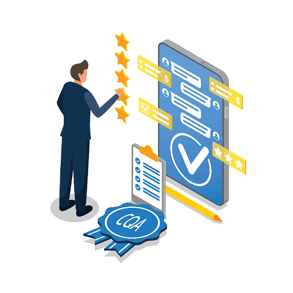
14. Desktop Application
SQM clients who have improved their FCR due to a new desktop initiative had done so by developing and implementing a unified desktop application focused on improving FCR. Comcast consolidated more than 20 unique desktop applications into one universal employee application that would be consistent, simple, smart, and Agents would love to use it every day. They call their desktop application Einstein.

15. Standard Operating Procedures
Standard Operating Practices (SOP) are specific to the operation and describe people, processes, and technology activities needed to complete a task according to an organization's standards for handling specific inquiries and problems. SOPs that are well-thought-out can be very effective for improving the performance for resolving inquiries and problems on the first contact. Also, when an organization has effective SOP practices for handling recurring types of inquiries or problems, the organization has good or great FCR and Csat performance.
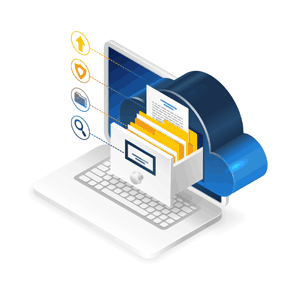
16. Performance Management System
SQM research shows that a Voice of the Customer (VoC) performance management system is one of the best practices for improving or maintaining great FCR, call resolution, Csat, and Esat performance. Scotia iTRADE VoC results (e.g., Csat, call resolution, FCR, world-class calls) are the primary metrics used for measuring performance at all levels throughout the contact center. Agent performance appraisals, compensation, career advancement, and improvement plans are based on VoC results. Scotia iTRADE has experienced significant FCR improvement by using a VoC Performance Management System.


17. First Contact Resolution Strategy
At SQM Group, we have identified four distinctive FCR Operating Strategies based on two variants: FCR focus and FCR scope. These two variants can help an organization determine its competitive position for the FCR Operating Strategy they want to use in the marketplace. The FCR focus is based on either a CX differentiation or a lower-cost emphasis. The FCR scope is either enterprise-wide or a contact center level. The four First Contact Resolution Strategies are: (1) Contact Center Scope with a Cost Focus, (2) Enterprise-Wide Scope with a Cost Focus, (3) Contact Center Scope using CX Differentiation Focus, and (4) Enterprise-Wide Scope using CX Differentiation Focus.
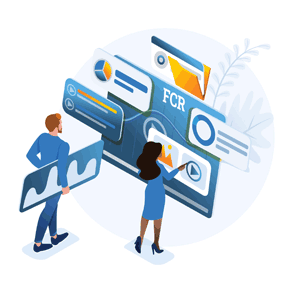
18. FCR at an Enterprise-Wide Level
Most organizational leaders view First Contact Resolution as a metric that is only applicable to contact centers. However, a small but growing number of organizations have included the FCR metric for enterprise-wide accountability at all levels (e.g., CEO and down). The First Contact Resolution rate is the pulse of your Organization's effectiveness and efficiency. By delivering FCR, you are making it easier for clients doing business with your Organization. Blue Cross Blue Shield of Massachusetts treats FCR as more than just a metric; FCR is an operating philosophy. They have incorporated the "FCR operating philosophy" into their core people, processes, and technology operating practices to ensure that they are focused on FCR accountability and delivering FCR to their customers.

19. FCR Strategy Leadership
Developing and implementing a First Contact Resolution Operating Strategy requires strategic leadership. Leaders and teams enact strategic leadership when creating the competitive position, alignment, resources, and commitment needed to achieve the enterprise's enduring performance potential. To achieve enduring performance potential, organizations may need to transform business practices, and therefore, strategic leadership requires successfully navigating and leading these transformational organizational changes.
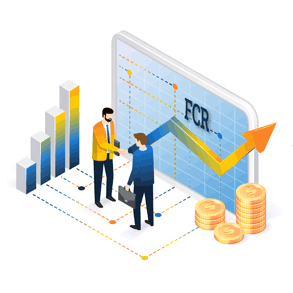
20. Omni-Channel Strategy
Many of SQM's clients are using an omni-channel strategy. At its core, an omni-channel practice is a multi-channel customer service approach that provides the customer with an integrated experience to resolve their inquiry or problem. Omni-channel is defined as a customer who had a seamless experience across all contact channels they used to resolve the same inquiry or problem. Put differently, when a customer used another channel to resolve the same inquiry or problem, they could pick up from where they left off in the previous channel and, as a result, did not have to start from the beginning.
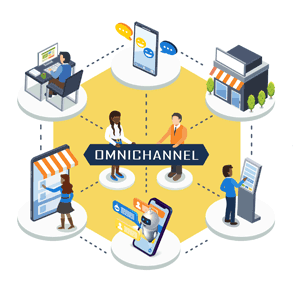
How SQM Can Help Your Organization Improve FCR
Since 1996, SQM has been a contact center First Contact Resolution expert specializing in measuring, benchmarking, tracking, and improving FCR. At the heart of our services is mySQM™ Customer Service QA Software, FCR research, best practices consulting, and awarding for FCR performance. We are passionate about helping contact centers improve FCR, deliver a great customer experience, reduce operating costs and customer defections, and increase NPS.
SQM clients use our proven survey questions in real-time or near-time of the transaction with their customers to provide FCR rate and improvement opportunities. SQM provides Agents and managers FCR data immediately after the survey takes place. The FCR data is actionable, and Agents and Managers can make quick improvements. SQM is simply the best contact center industry SaaS CX firm in North America for measuring, benchmarking, tracking, and improving First Contact Resolution. Give SQM a call or email to see how we can help you with your FCR efforts.
Quick Related Links
FCR Measurement Case Study Repeat Contact Reasons Action Plan FCR BenchmarkAgent Career Aspirations Standard Operating Procedures FCR Operating StrategiesOmni-Channel Practice FCR Software First Call Resolution

